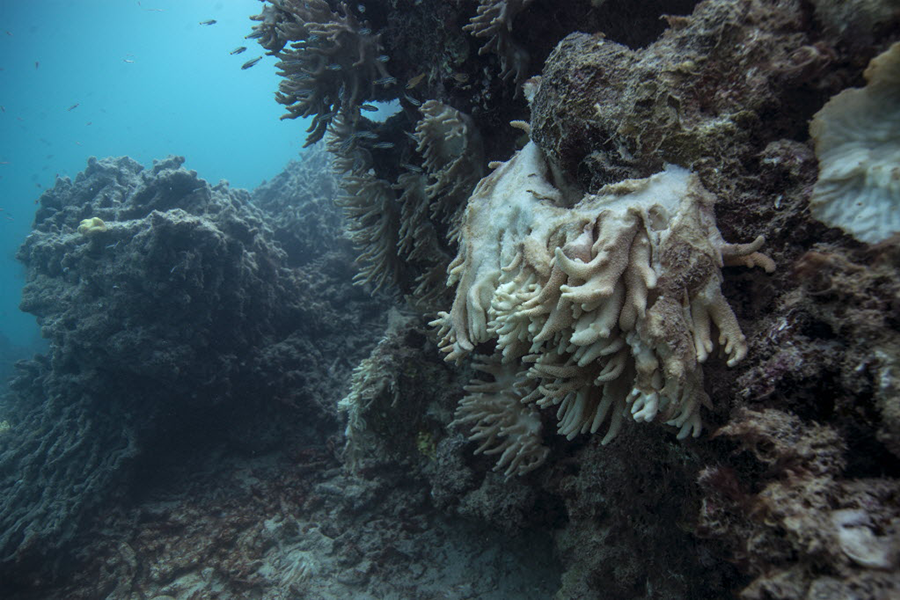How did a 'zombie' coral reef come back to life?
Loading...
Coral reefs around the world are dying, thanks to climate change and pollution. But on the floor of an island lagoon in the Pacific lies a glimmer of hope.
The lagoon reef, Coral Castles, was declared dead in 2003. But now, The New York Times reports, the reef is colorful and teeming with life again.
And if scientists can figure out why Coral Castles reef is flourishing again, they may be able to save other reefs around the world.
Coral damage like that seen at Coral Castles is typically caused by rising water temperatures or pollution.
Warmer water and carbon emissions cause ocean acidification, which in turn can lead to coral "bleaching," the term given to the damage caused when corals expel the symbiotic algae they need to survive.
Globally, oceans are suffering the longest coral bleaching event on record.
So how did Coral Castles rebound?
Researchers who have visited the reef even since it was declared dead think government-implemented conservation efforts may have done the trick.
The Phoenix Islands Protected Area, established in 2008, stopped commercial fishing and diverted shipping lanes from the 157,626-square-mile preserve east of Australia, which encompasses the island nation of Kiribati and the rebounding lagoon reef.
Or perhaps the symbiotic algae has evolved to cope with the changing conditions, says Randi Rotjan, a research scientist from the New England Aquarium in Boston who led and tracked the Phoenix Islands expedition to investigate the state of the corals. Or, she told The New York Times, perhaps hardier coral species are replacing the more sensitive ones.
Either way, Verena Schoepf, a coral expert at the University of Western Australia told the Times, “It’s critical that we understand what happened there, because that would help us understand how corals might be able to cope with climate change in the long run.”
When marine biologists conducted research dives at Coral Castles in 2009 and 2012, the reef still appeared dead. But when Dr. Rotjan and colleagues took another research expedition to the lagoon in 2015, they were shocked to see the ecosystem had resurrected.
“Everything looked just magnificent,” Jan Witting, the expedition’s chief scientist and a researcher at Sea Education Association, based in Woods Hole, Mass., told the Times. The reef was colorful and full of life again.
The team returned to take a closer look this summer and found that the rebound has continued – Coral Castles is thriving again after over a decade of death.
The team hopes that further research will give them more insights into this miraculous recovery.
“There’s a recipe book that can be developed out of what we’re learning here,” Dr. Witting said. “You need to make a strong case that this can work before anyone else will try it.”
Although scientists are generally finding a dismal picture when they peek beneath the surface of the ocean at coral reefs, some point to hopeful signs. In addition to the rebound at Coral Castles reef, scientists have found some more resilient reefs and a thriving, entirely new coral reef at the mouth of the Amazon River.








